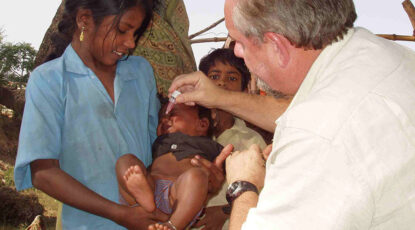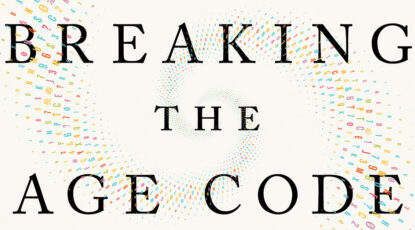Research News
-
Return of the creature feature … on TikTok
Charlie Engelman, BS ‘14, counts 1.6M followers at ‘oddanimalspecimens,’ his wildly entertaining take on the slimy and sublime. Fun facts abound at U-M’s research collections as Engelman tweezes and teaches his way around spiny lumpsuckers, blood-sucking sea lampreys, and more.
-
Calling Dr. Brilliant
When this seasoned epidemiologist launched his unconventional career in 1969, he fit the bill as the ‘hippie doctor’ with a penchant for Ram Dass and Wavy Gravy. Since then, this aptly named frontline worker has won public health victories over smallpox, blindness, Ebola, and COVID-19. Next? Monkeypox.
-
U-M reports record $1.71B in annual research volume
Total research volume at the University increased by 8.4% in FY ’22, fueling innovations in global health, Great Lakes water quality, firearm violence, and driverless vehicle technologies. FY ’22 also marked a record high of $973M in federally sponsored research expenditures.
-
First light at the most powerful laser in the U.S.
Michigan Engineering recently fired up the Zetawatt-Equivalent Ultrashort pulse laser System, promising new developments in medicine, electronics, and national security. Funded by the National Science Foundation, ZEUS will explore the physics of the quantum universe.
-
Remembering Janice Bluestein Longone
Culinary historian and adjunct curator Janice Bluestein Longone passed away in August 2022 at the age of 89. She was the principal donor and driving force behind the formation of the Janice Bluestein Longone Culinary Archive, which supports numerous courses at U-M.
-
Institute for Firearm Injury Prevention welcomes first faculty cohort
The new faculty represent multiple disciplines, from social sciences and the arts to engineering and public health. They will join institute researchers who have collectively secured more federal funding to study firearm injury prevention than any other academic institution nationwide.
-
Durable coating kills COVID virus, other germs in minutes
The coating, which is clear and can be brushed or sprayed on, could be a game changer in traditionally germ-laden public spaces like airports and hospitals. It gets its durability and germ-killing power by combining tried-and-true ingredients in a new way.
-
Depression among those caring for partners with dementia can start a decade before dementia diagnosis
New study finds that dementia’s pre-onset period, which may include mild cognitive impairment, is an important time to identify needs and solutions for families that will go on to live with the condition.
-
Positively breaking the age code
A silent epidemic of ageism is destroying our health, says Becca Levy, BA ’87. In her new book, the scientist breaks the age code to show how people who hold optimistic beliefs about the aging process experience more positive health outcomes than their negative counterparts.










